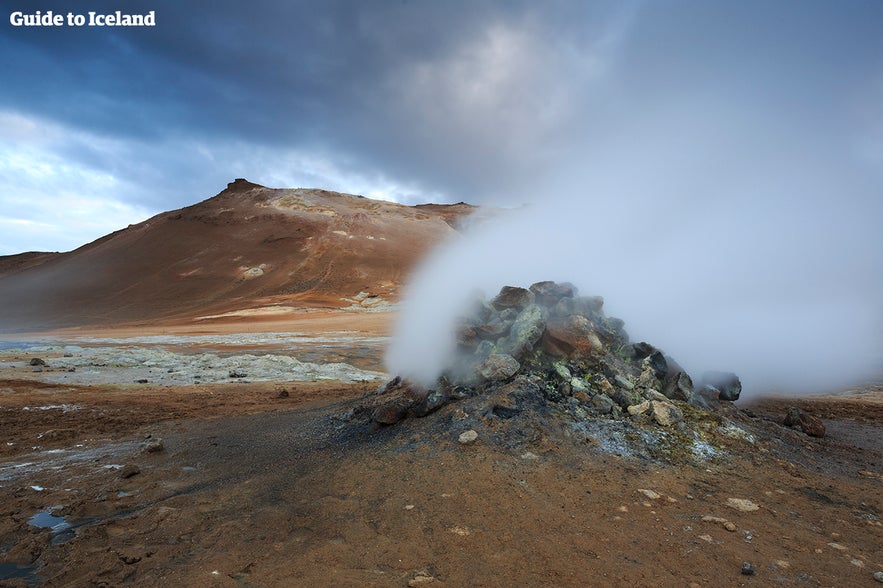
The Ultimate Guide to Game of Thrones in Iceland

- Why WasGame of Thrones Filmed in Iceland?
- How Hard Was Filming Game of Thrones in Iceland?
- Game of Thrones Scenes at Thingvellir National Park
- 'The Bloody Gate' | Oxararfoss Trail
- Brienne & the Hound | Nesjavellir, Thingvellir
- Countryside of Meereen | Thorufoss
- Game of Thrones Scenes on the Glaciers of Iceland
- The Fist of the First Men | Myrdalsjokull
- The Quest to Catch a Wight | Gigjokull
- Miscellaneous Scenes Beyond the Wall | Svinafellsjokull
- Game of Thrones Scenes on the South Coast of Iceland
- Jon Snow Rides a Dragon | Skogafoss Waterfall
- Olly's Village | Thjodveldisbaerinn Stong
- Catching a Wight | Stakkholtsgja Gully
- Eastwatch-By-the-Sea | Reynisfjara Beach
- Game of Thrones Scenes in Myvatn, North Iceland
- Ygritte & Jon's Love Cave | Grjotagja Cave
- Mance Rayder’s Wildling Camp | Dimmuborgir Lava Field
- Corner of The Haunted Forest | Hverir
- Game of Thrones Scenes on the Snaefellsnes Peninsula
- ‘The Mountain Shaped like an Arrowhead’ | Mt. Kirkjufell
- Other Icelandic Features in Game of Thrones
- The Mountain That Rides
- The Icelandic Horse
- Extras
- Similarities Between Game of Thrones and Icelandic Folklore
- Game of Thrones Tours in Iceland
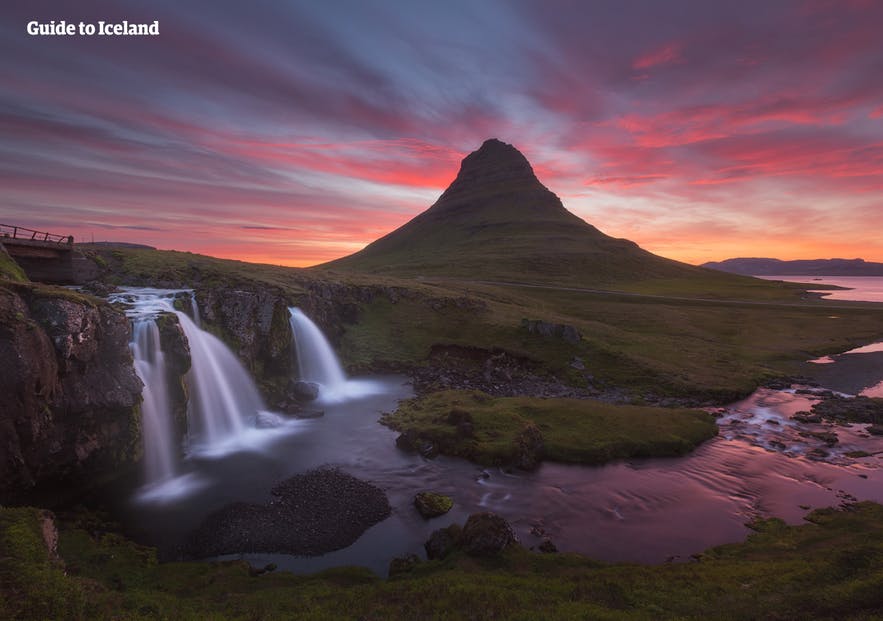
Where can you find Game of Thrones filming locations in Iceland? Do you want to visit the breathtaking scenery of the lands Beyond the Wall or the Bloody Gate? Why did the producers choose Iceland, and how did the cast and crew get on filming here? Read ahead for the Ultimate Guide to Game of Thrones in Iceland.
- Book a Game of Thrones 10-Day Self Drive Tour
- Ensure your spot on 6 Day Summer Package | Game of Thrones Locations & Glacier Hike
- Don't miss your opportunity to partake in a Game of Thrones Activity Tour Bundle
Game of Thrones, the HBO series based on the George R. R. Martin novels A Song of Ice and Fire, is an international phenomenon like nothing else.
Since it first aired in 2011, it has captured audiences with its incredible cinematography, gripping storyline, thought-provoking themes, and shocking plot-twists. However, the show would by no means be as compelling, realistic, or as beautiful to watch without the help of Iceland.
Lo Mejor de Tours y Excursiones de Juego de Tronos
Épico Tour A tu Aire de 14 Días por la Ring Road Completa de Islandia y los Fiordos del Oeste
Increíble Tour Vacaciones en Islandia 6 Días en Verano con Localizaciones de Juego de Tronos y Senderismo Glaciar
El Tour A tu Aire Definitivo de 8 Días de Juego de Tronos en Islandia con Localizaciones de Rodaje
Since the second series, the show has filmed many of the most iconic scenes here, bringing what once existed in one man’s imagination to the homes of millions. Just as tens of thousands have flocked to New Zealand to witness the shooting locations of Lord of the Rings or to the UK to see the sites of Harry Potter, more and more people are planning holidays to Iceland to walk among the landscapes that contributed so significantly to the world of Westeros.
Since 2019 marked the end of this incredible epic, find out how you can keep the story alive on your travels to Iceland.
WARNING: This article is for Game of Thrones fans who are entirely up-to-date with Season Eight and is jam-packed full of spoilers.
Why WasGame of Thrones Filmed in Iceland?
Iceland has long been a popular international filming location. Its landscapes and features are incredibly dramatic, and its wilderness is mostly untouched. Its position near the Arctic Circle in winter provides excellent lighting conditions; the low sun creates perpetual dusk throughout the daytime, allowing for an extended 'Golden Hour' of photography.
The otherworldly nature of Iceland has been inspiring storytellers long before the invention of film. According to folklore, towering rock formations and sea stacks are trolls petrified to stone by the morning sun's light. Lava fields are said to be inhabited by ‘hidden people,’ who can move between our world and theirs, and features such as Ásbyrgi Canyon are so dramatic that they are said to have been formed by the Old Norse Gods.
In this land of legends, dragons and White Walkers are not too bold a leap of the imagination.
Though the show's second season initially featured the winter wilderness, Iceland's diverse beauty meant that soon, many scenes were also shot here in summer, including some meant to represent the warm climates of Essos. Looking at the series as a whole in hindsight, you can now see that the show used a wide range of this country's features to build the world that George R. R. Martin created.
Aside from its nature, the showrunners chose Iceland as a shooting location for Game of Thrones due to the sites' accessibility. You can find unbelievable landscapes just off the Ring Road that encircles the country. Also, many Icelanders are trained to traverse rugged terrains, such as the Highlands and glaciers. Having a strong infrastructure and a wide range of experts makes shooting here much more comfortable than it would have been in many other countries with similar conditions.
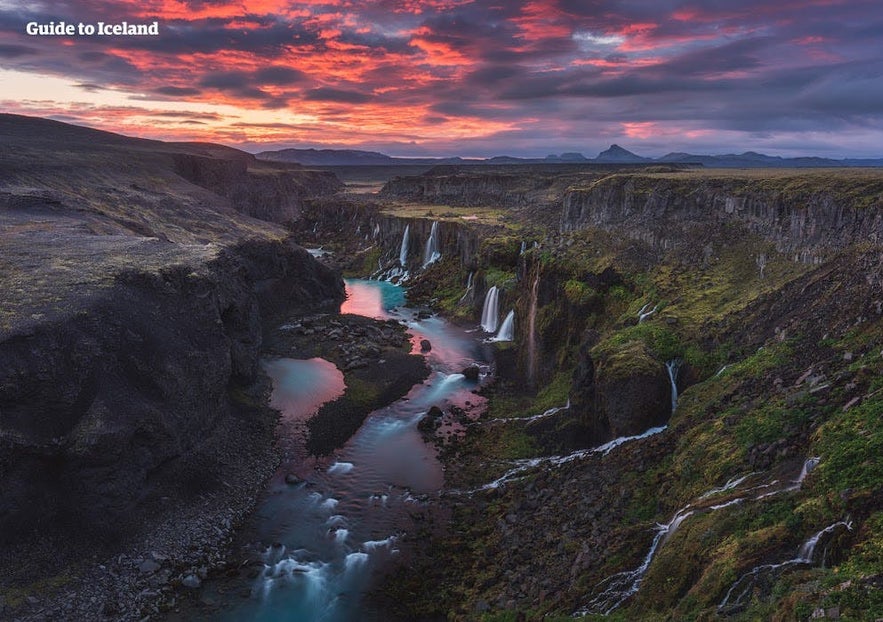
Iceland thus became as integral to the landscapes of Game of Thrones as Croatia (which primarily represents Kings Landing), Spain (which mainly represents Dorne), Morocco (which mostly represents Essos), and Ireland (which largely represents the countryside, castles, and smaller towns of Westeros).
With modern technology, the show edited together many landscapes from all of these locations to create a world that is truly unlike anywhere on Earth. Scenes shot in Ireland along the King's Road, for example, may have the mountains of Iceland in the distance.
Other than shooting locations, Iceland provided the Game of Thrones series with actors, extras, and its unique breed of horses. You can easily compare many aspects of the magic in Game of Thrones to Iceland's folklore, and filming here was an integral part of many of the actors' experience with the show.
How Hard Was Filming Game of Thrones in Iceland?
In November, December, and January, Iceland has very few hours of daylight; at the winter solstice, the sun rises for about four hours in the south and just over two hours in the north. While this season's constant twilight is excellent for lighting, it provides a very short window in which to shoot a scene. Therefore, it was often imperative for crew members to set up and dismantle equipment in complete darkness, made all the more difficult by winter conditions.
The conditions in this season are incredibly unpredictable and often extreme. Snow, hail, high winds, and rain are all regular occurrences, and due to Iceland’s position in relation to the Gulf Stream, storms here can last weeks. This inconsistency posed a huge problem for showrunners of Game of Thrones, not just in the practical task of filming but in ensuring continuity between shots.
Adding to these problems, many of the locations are shot in places very vulnerable to the weather, such as on the surfaces of glaciers.
Furthermore, Icelanders are incredibly protective over their nature and are very displeased when international displays show disrespect for the landscapes (are you reading, Justin Bieber?). Therefore, at each location, the cast and crew had to be sure that they were not damaging the country’s moss, which takes years to grow back; its brittle lava, which never will; and its black sand environments, which are to be left undisturbed.
Game of Thrones location managers and producers often had to seek permission from the country’s Environmental Protection Agency before shooting in certain places and were rightfully admonished when they didn’t.
- See also: Iceland's Troubled Environment
Finally, it was a challenge for the cast to balance the show's realism with the conditions in Iceland. Shooting a scene in summer or a steaming geothermal area, wearing heavy armor or thick furs, required a massive amount of dedication, as did waiting for shooting to start in freezing winter conditions.
As such, filming in Iceland certainly had its issues. Below, we have listed all of the country's major shooting locations, discussed problems that arose at each, and how they were overcome.
Game of Thrones Scenes at Thingvellir National Park
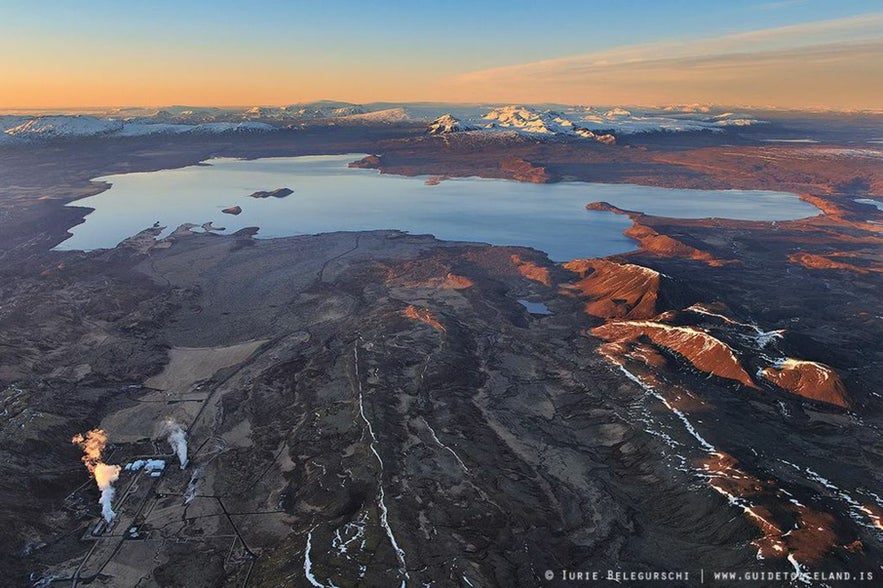
Þingvellir is one of the most visited sites in Iceland and one of the most recognizable Icelandic locations in Game of Thrones. As one of the three main attractions that make up the famous Golden Circle route is most often seen alongside the Haukadalur Geothermal Valley, renowned for its incredible geysers, and the magnificent Gullfoss waterfall.
Not only is it one of just three National Parks in the country, but it is a UNESCO World Heritage Site. This is because Þingvellir is the location where the Icelandic Assembly, the Alþingi, was first held, all the way back in 930 AD. The Alþingi met here annually for over eight hundred years before moving to Reykjavík, making Þingvellir the original site of what is now the world's longest-running, ongoing parliament.
Aside from its history, the National Park is renowned for its incredible beauty. Lava fields, forests, ravines, and freshwater springs fill the area, overlooking Þingvallavatn, the country's largest natural lake.
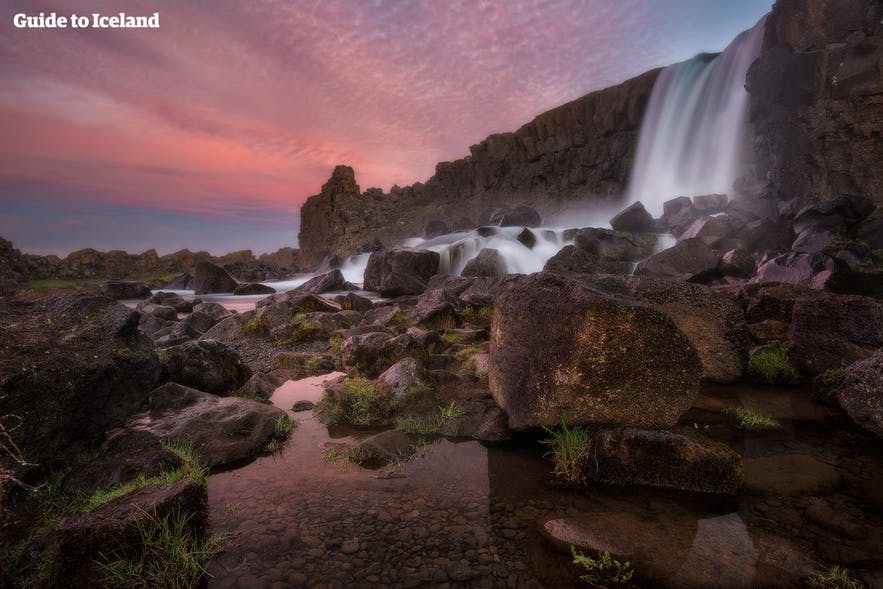
On either side of the site are two dramatic cliff-faces, which remarkably represent the edges of the North American and Eurasian tectonic plates; Þingvellir exists between the continents, in the Mid-Atlantic Rift. This creates some incredible geology, such as the narrow and dramatic Almannagjá gorge on the North American side.
There are many tours that operate out of Reykjavík to travel the Golden Circle; some even explore the attractions with a Game of Thrones twist. You can also rent a car and explore the area for yourself at your own leisure, as the route is well-maintained and manageable throughout the year.
Fans of Game of Thrones will likely find much of the area eerily (or, should we say, Eyrie-ly) familiar, and below, we have listed the shooting locations to let you know why.
- See Also: How to Drive the Golden Circle
'The Bloody Gate' | Oxararfoss Trail
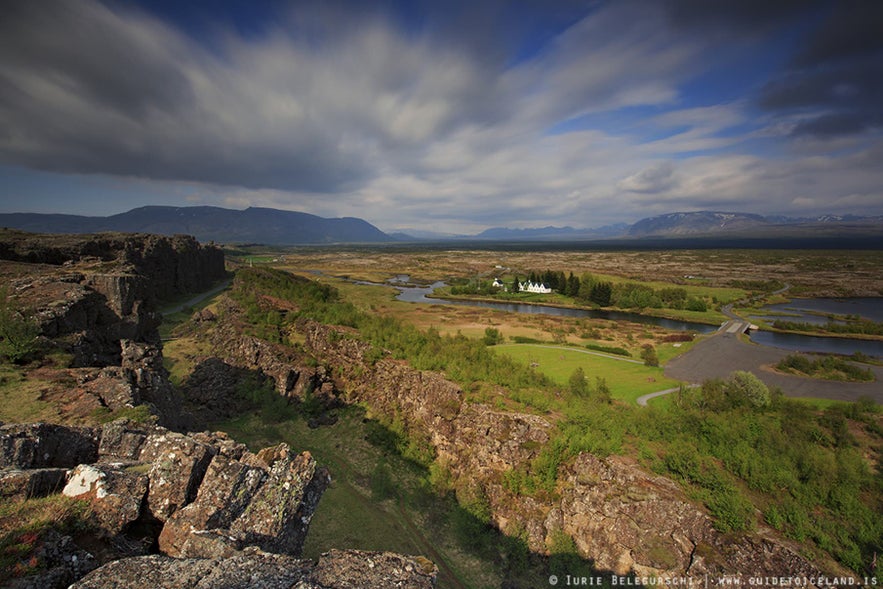
Although a popular and busy tourist attraction, the Game of Thrones cinematographers could not resist the dramatic beauty of the Almannagjá gorge, which sites beside Öxarárfoss waterfall. The cast and crew shot for three days here in the summer throughout the fourth season, keeping the tourists at bay and making the most of this epic landmark.
On-screen, the site was transformed into the narrow passage leading to The Bloody Gate, an ancient fortification guarding the entrance to the formidable Eyrie. Both Stark sisters make their way to the gate to reach their Aunt Lysa under very different circumstances. Sansa is accompanied by Littlefinger, Lord Petyr Baelish, in Episode Five, and Arya is taken there by the Hound, Sandor Clegane, as his prisoner in Episode Eight.
The area is also used for a scene from the same season, which features the wildlings; here, the newly betrayed Ygritte and Tormund Giantsbane are introduced to the cannibal Thenns as they make their way to Castle Black.
Shooting in the summertime does not come without its challenges. On top of blocking off the area to large numbers of tourists, it was particularly warm during the days of filming, especially in the gorge's sheltered walls. Although 25°C (77°F) may not seem very uncomfortable, the actors and extras were dressed in furs and heavy armor, and none were prepared for such temperatures in this notoriously chilly country.
- See also: Weather in Iceland & Best Time to Visit
Brienne & the Hound | Nesjavellir, Thingvellir
What follows is arguably one of the most intense altercations in the show, as two fan-favorites engage in an epic melee, culminating in Brienne's victory as she kicks the Hound off a cliff. Seven separate locations in the Nesjavellir area were chosen to film this nail-biting battle.
If you find yourself in the area during the milder months, go for a hike around the stunning Hengill mountain and see if you can spot any familiar backdrops.
 Photo from Wikimedia, Creative Commons, by Reykholt. No edits made.
Photo from Wikimedia, Creative Commons, by Reykholt. No edits made.
Although Brienne is victorious in battle, she fails to win over Arya. The shot above shows the Stark girl at the top of Öxarárfoss waterfall astride an Icelandic horse shortly after joining the Lady of Tarth and leaving the Hound to perish.
Although it is not possible to climb the same vantage point, you can visit the waterfall on the ground level by walking to the bottom of the trail at Þingvellir and following the signs.
In the following scene, Arya takes a ship to Braavos. The lake Þingvallavatn is used to represent the sea; the mountains on the far side of the water are edited out to make it appear like she is sailing into the open ocean.
Countryside of Meereen | Thorufoss
- See also: Waterfalls in Iceland
Þórufoss waterfall is the location used for this scene. To the east of Þingvallavatn and less than an hour's drive from Reykjavík, it is one of the most accessible shooting sites that Game of Thrones fans can visit. If you are driving yourself around the Golden Circle, you only need to take a short detour before reaching Þingvellir National Park by following Route 48 off of Route 36.
Interestingly, Iceland was used to represent a scene in Essos, a warm continent with a climate quite different to this near-Arctic country. Due to the classically volcanic landscapes here, however, and the muted color of the moss, the nature in summer easily lent itself to such a scene with a little imagination from the show's creative forces.
Game of Thrones Scenes on the Glaciers of Iceland
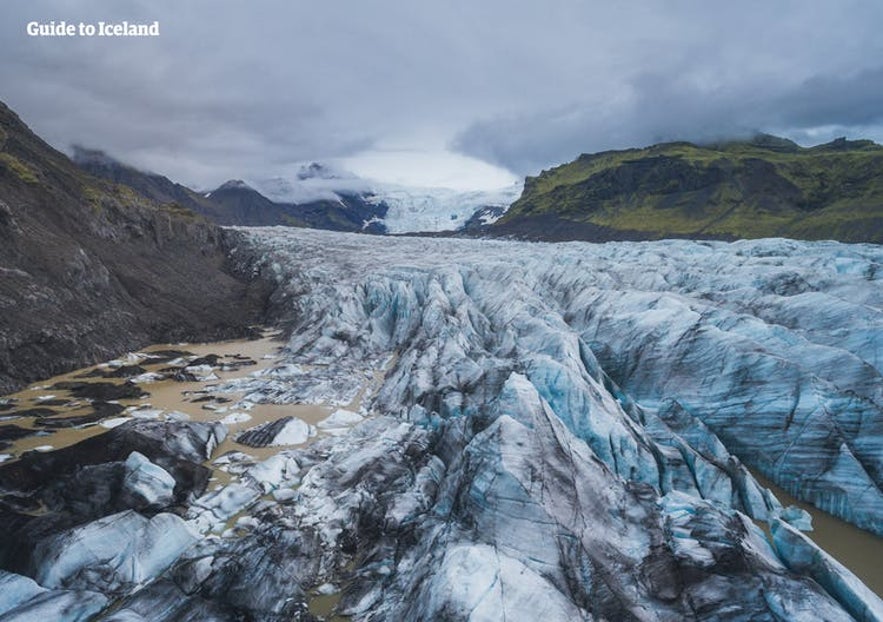
Iceland is home to the largest ice cap in Europe, Vatnajökull, and 11% of the country is covered by glaciers. These spectacular feats of nature draw thousands of guests to the country, whether they are looking to take a glacier hiking or snowmobiling tour or else an excursion into the otherworldly space of a crystal blue ice cave in winter.
The glaciers, however, can be harsh and unforgiving. Dramatic ridges, plunging crevasses, exposure to the elements, and, of course, their freezing surfaces make them dangerous places to be for those without training, specialist equipment, or an experienced guide. As such, they perfectly matched the description of the cruel, icy lands described North of the Wall in A Song of Ice and Fire.
Most of the scenes on the glaciers were filmed in the depths of winter, where fresh snow and newly frozen ice created the most appropriately inhospitable setting. However, during this season, the number of daylight hours in Iceland can be counted on one hand. Therefore, the crew had to transport the gear in the morning before the sun came up so that when it did, the cameras could start rolling immediately.
At the end of the day, all of the gear would have to be taken off the glacier once again in near-total darkness. Of course, this was a massive project that required a whole host of Icelandic experts to make it a reality.
- See also: Glaciers in Iceland
The Fist of the First Men | Myrdalsjokull
These scenes were shot on Mýrdalsjökull glacier, Iceland’s fourth largest ice cap and the most popular for glacial hiking and ice climbing due to its proximity to the capital. There is no need to fear wildlings or wights atop this glacial mass; the only threat here is Katla, the volcano brewing underneath it, which happens to be long overdue for an eruption.
However, you can take a tour here comfortably, in the knowledge that the area is monitored very closely and will be evacuated should any rumblings be detected.
- Book the Katla Ice Cave Tour | Departure from Vík here
The Quest to Catch a Wight | Gigjokull
Gígjökull made its appearance in the seventh episode of Season Seven, when Jon Snow, understanding that Queen Cersei would never believe the undead were marching on the living without evidence, leads an unlikely group Beyond the Wall to retrieve a Wight.
Many characters in this story arc had not met before, and thus several of the actors had not shot in Iceland. For example, Iain Glenn, who plays Jorah Mormont, and Ian Dempsie, who portrays Gendry, were first introduced to filming here with these scenes.
However, it should be noted that some of the most dramatic incidents in this march North were not shot on the glacier but in a studio, most notably the battle against the undead bear.
Miscellaneous Scenes Beyond the Wall | Svinafellsjokull
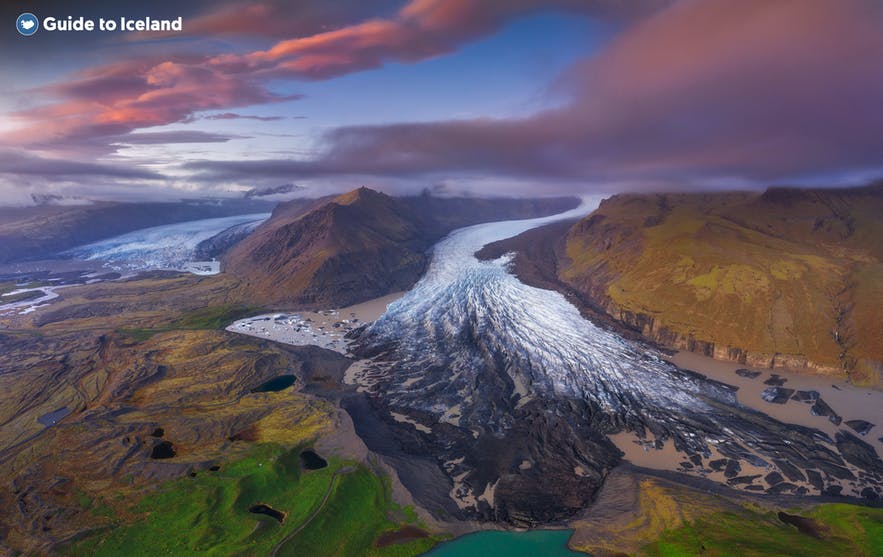
An outlet of Vatnajökull glacier, Svínafellsjökull, has been nicknamed 'The Hollywood Glacier' as it has featured in numerous blockbusters, including Batman Begins. It is little wonder why; the cinematic appeal of Svínafellsjökull lies in its sharp ridges and vivid coloration, with deep electric blues, punctuated with veins of black ash, scars of volcanic eruptions from past centuries.
The outlet is also very accessible, located in the popular Skaftafell Nature Reserve. As such, when film crews are not using it, it is one of the most popular locations for glacier hiking throughout the year.
Many miscellaneous scenes North of the Wall, featuring the armies of the undead, wildlings, and Nights Watch, were shot here throughout the second and third series of Game of Thrones. Aerial shots, in particular, favored this site.
Game of Thrones Scenes on the South Coast of Iceland 
Aside from its glaciers, the South Coast of Iceland boasts many fabulous attractions, rich in beauty and diverse in nature. It is the second most popular sightseeing route in the country, after the Golden Circle. Guests traversing it will be able to marvel over some of the country's most spectacular waterfalls, dramatic geological formations, and unique beaches, as well as the 'Crown Jewel of Iceland's Nature,' the Jökulsárlón Glacier Lagoon.
All of these sites are easily accessible, sitting just by Route 1. As such, the showrunners of Game of Thrones found some fantastic settings for scenes that required beautiful backdrops without having to trek deep into Iceland's nature.
There are a number of ways to visit the South Coast. Many operators offer day-tours that take you to the country's southernmost village, Vík, and back. Otherwise, multi-day tours will allow you to reach and explore the glacier lagoon and Diamond Beach without rushing. Between mid-October and March, these multi-day tours come highly recommended as many include a visit into the aforementioned ice caves. Note that some operators only enter the caves from November.
Of course, you can also rent a car to spend as long at each site as you like, which may be the preferred option if you want to tailor your experience to the Game of Thrones locations.
Jon Snow Rides a Dragon | Skogafoss Waterfall
This waterfall is Skógafoss on the South Coast, easily visible from Route 1 and one of the most visited and beloved sites in the country. Like with many scenes in the series, however, the waterfall was manipulated with CGI to make it seem even more cinematic and romantic, to the extent that it takes a moment to recognize. These added effects helped create the perfect location for the Breaker of Chains and Warden of the North to light-heartedly consider hiding away and leaving their world and wars behind.
The scene where Jon and Daenerys are soaring over the North was shot from a helicopter flying over Iceland's landscapes. However, the actors recorded their scenes in a studio, riding rodeo-like mounts against a green screen.
Olly's Village | Thjodveldisbaerinn Stong
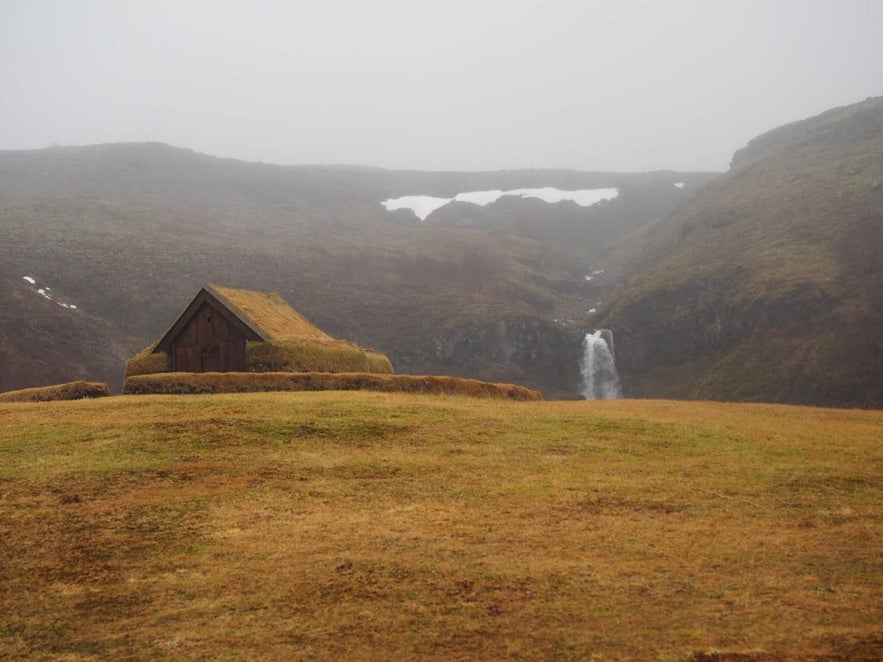 Photo from Private Jeep Tour | Game of Thrones Adventure
Photo from Private Jeep Tour | Game of Thrones Adventure
Nestled in the beautiful Þjórsárdalur valley in the southern Icelandic Highlands, a short drive from Route 1, is Þjóðveldisbærinn Stöng, a reconstructed Viking-era farmstead. This is an excellent place for guests to see what life was like for early Icelanders, with its turf-roofed buildings and historical artifacts. It also provided the perfect setting for Game of Thrones showrunners to shoot a realistic village in the North.
While this reconstruction was built to celebrate 1,100 years of settlement, in reality, its role is much darker in the context of the show. It is here that wildlings, including Jon Snow's lover Ygritte, raided and massacred innocent farmers. The parents of Olly, a young boy who would later join the Night's Watch, were among those slaughtered, and his subsequent hatred for the Free Folk would ultimately end in him joining the group that temporarily killed Snow.
Þjórsárdalur is well worth visiting, even for those who are not tracking down all the Game of Thrones shooting locations. A beautiful valley on the South Coast, it features many attractions, including hot springs, forests, and one of the tallest waterfalls in Iceland, Háifoss. There is also a campsite here, so if you want to experience the area like a wildling, bring a tent.
Catching a Wight | Stakkholtsgja Gully
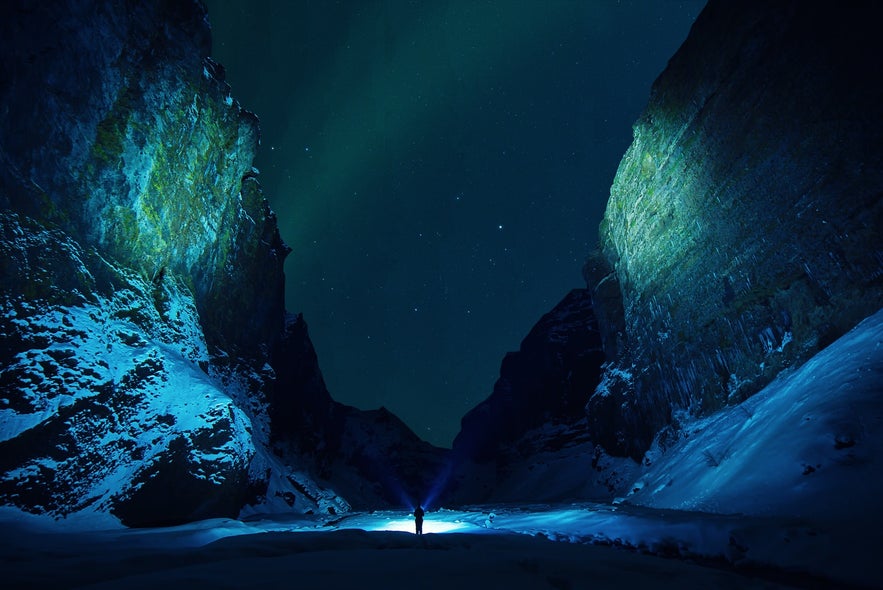 Photo by Jonatan Pie
Photo by Jonatan Pie
Stakkholtsgjá gully is a moss-covered canyon near Þórsmörk, a forested area most known for being the starting or finishing point for the Laugavegur Highland Trail. Like Gígjökull, it was featured in the penultimate episode of Season Seven, when Jon Snow and his unlikely group of companions were marching Beyond the Wall to capture a Wight.
- Book a Þórsmörk Super Jeep Day Tour here
These scenes were some of the most challenging for the cast and crew to date. The Southern Highlands conditions were incredibly cold, snowy, and windy throughout the winter shoot, which explains why this region is mostly accessible to guests in summer. However, the final result perfectly captured the inhospitable North, the difficulty of the quest, and the braveness of the characters involved.
The subsequent fight on the lake was actually filmed in Belfast, although the editing was so seamless that the audience would never guess the transition.
Eastwatch-By-the-Sea | Reynisfjara Beach
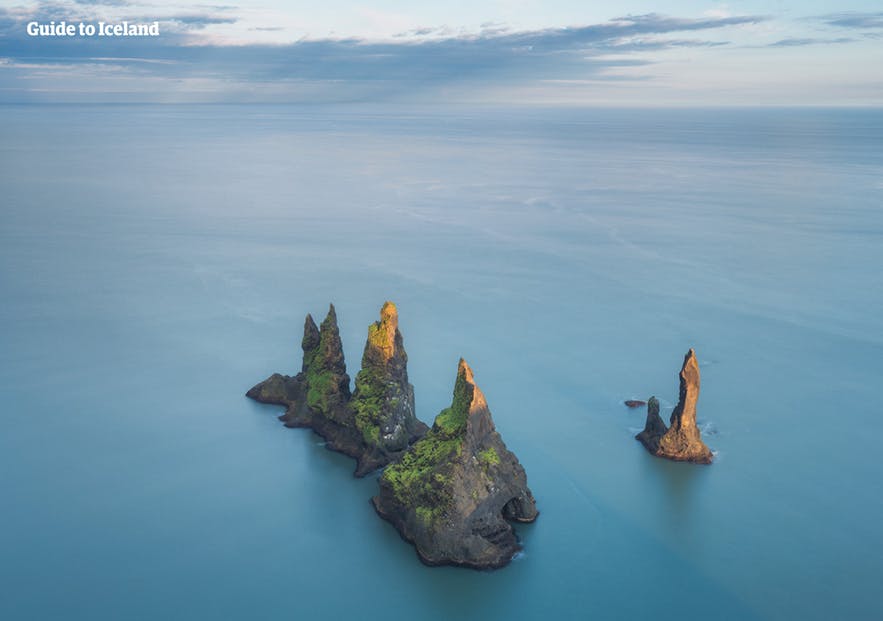
The South Coast of Iceland is defined by its beaches of volcanic black sands, which provide an otherworldly, somewhat haunting beauty to the region. The most famous part of this shoreline, Reynisfjara, is further renowned for two things: its mighty waves and its dramatic sea-stacks, named Reynisdrangar.
According to folklore, the two towers of Reynisdrangar are all that is left of a pair of trolls who, when trying to pull a boat into shore, were caught in the light of the rising sun and turned to stone. Their dramatic beauty leaves little wonder as to why Icelanders could not help but associate them with their superstitions, nor why the Game of Thrones creators was eager to feature them in Season Seven.
Though only appearing briefly, they form part of the coastal geography around Eastwatch by the Sea, the Night's Watch castle that the army of the dead is marching towards. Scenes shot on Reynisfjara beach here caused a little controversy since there is a ban on driving in the area, which was unbeknownst to the crew.
Vehicles transporting the cast and equipment marked the beach with tire tracks without the necessary permission from the Environmental Agency of Iceland, and the media was appropriately scolding.
Game of Thrones Scenes in Myvatn, North Iceland
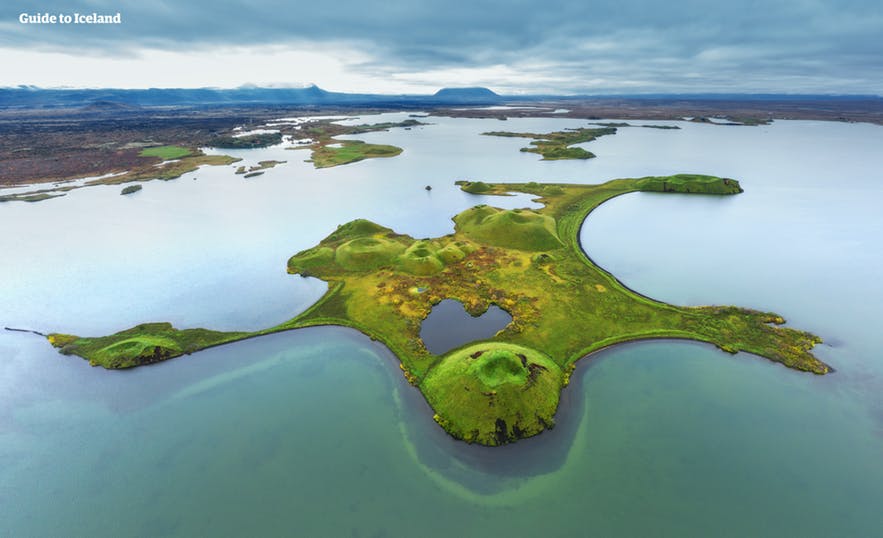
Mývatn is the name of a lake and its surrounding area in the North of Iceland, just an hour's drive away from the Capital in the North, Akureyri.
The region is a popular sightseeing destination as it boasts many diverse and impressive natural features, and it is one of the key stops on the popular Diamond Circle route. This route also visits the most powerful waterfall in Europe, Dettifoss; the whale-watching capital of the country, Húsavík; and the horseshoe-shaped canyon Ásbyrgi.
Guests arrive at the area for a wide variety of reasons; it boasts spectacular geothermal sites, a wealth of birdlife, dramatic craters and lava fields, as well as some of the most verdant vistas in the country in summer and spectacular snowscapes in winter. Such appealing features were not overlooked by the Game of Thrones creators, who shot many of the scenes North of the Wall here in Season Three.
Ygritte & Jon's Love Cave | Grjotagja Cave
 Photo from 3 in 1 Bundled Tours of Game of Thrones Locations with the Golden Circle, South Coast & Myvatn
Photo from 3 in 1 Bundled Tours of Game of Thrones Locations with the Golden Circle, South Coast & Myvatn
Grjótagjá Cave is a true hidden gem in the Lake Mývatn region; it is a lava cave formed by a dramatic eruption in the area centuries ago and a hot spring. The clear, steaming blue waters within it make it seem as if it were drawn from fantasy, thus perfectly lending itself to the Game of Thrones franchise.
In Season Three, after many episodes of 'will they, won't they,' the wildling Ygritte and protagonist Jon Snow finally become intimate, with Grjótagjá serving as the secluded, romantic setting. A waterfall is added through CGI to add even more beauty to the site, but the cave is instantly recognizable even without it.
After the airing of the episode, more and more guests sought out this secretive location. Unfortunately, however, many chose to ignore the no-bathing rule (established due to the volatile temperatures of the waters), and the site could not handle the increased traffic. To protect it for years to come, the landowners were unfortunately forced to close the site to visitors in 2018.
This is a terrible shame but serves as a cautionary tale to encourage respectful behavior while visiting Iceland.
Mance Rayder’s Wildling Camp | Dimmuborgir Lava Field
Dimmuborgir is a rugged lava field right by Lake Mývatn, known for its enormous, dark rock formations, which have been likened to a medieval fort; its name thus translates to 'the Dark Fortress.' Folklore says the area is home to Iceland’s most feared troll, Grýla, who has an insatiable appetite for children, and her thirteen sons, who wreak havoc in Icelandic towns over the days surrounding Christmas.
- See also: Christmas in Iceland
Within the world of Game of Thrones, the dramatic towers of basalt are put to good use, forming natural fortifications for the King Beyond the Wall’s base camp. Here, Jon Snow convinces the wildlings that he has abandoned the ways of the Night's Watch, including Mance Raider and his lover Ygritte. The area is filled by the Free Folk army in anticipation of their assault on the Wall and serves as the location where the first of the legendary giants is seen.
Corner of The Haunted Forest | Hverir
At the start of Season Three, we see Samwell Tarly fighting his way through a formidable storm after escaping the army of the dead at the Fist of the First Men. Though this area appears to be a wintery wasteland, the opposite is the case. The effect of the blizzard was actually created by utilizing the thick steam emerging from geothermal vents at the Námafell geothermal area.
This mountain pass is renowned for its barren landscapes; the air is heavy with the smell of sulfur, and no life grows from the poisoned ground. Bursts of color, however, can be found around the vents themselves, dyed by the minerals brought up from the depths of the earth.
Actor John Bradley may not have been completely acting his distress as he fled and hid from the Night King; he was probably experiencing a fair degree of discomfort, wrapped in heavy furs and being forced to run through hot, sulfurous clouds for the hours it took to shoot the scene.
Game of Thrones Scenes on the Snaefellsnes Peninsula
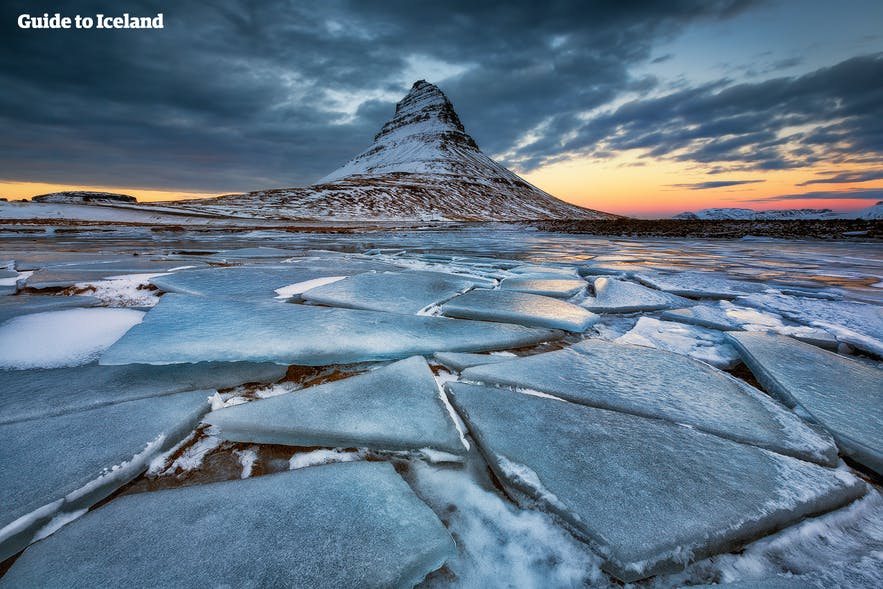
The Snæfellsnes Peninsula is often referred to as Iceland in Miniature due to its diverse array of natural features. The most famous feature of the area is undoubtedly Snæfellsjökull, a twin-peaked glacier, and volcano; this landmark has inspired writers and artists for centuries. Even so, guests are likely to be similarly amazed by its dramatic mountains, stunning beaches, awe-inspiring gorges, and twisting lava caves.
If you are driving the Ring Road around Iceland, it is worth taking an extra day to explore the peninsula; similarly, it makes for a great day trip destination from Reykjavík, whether you are renting a car or taking tours. Those seeking to find the shooting locations of Game of Thrones, however, need only to locate one feature on the northern shore.
‘The Mountain Shaped like an Arrowhead’ | Mt. Kirkjufell
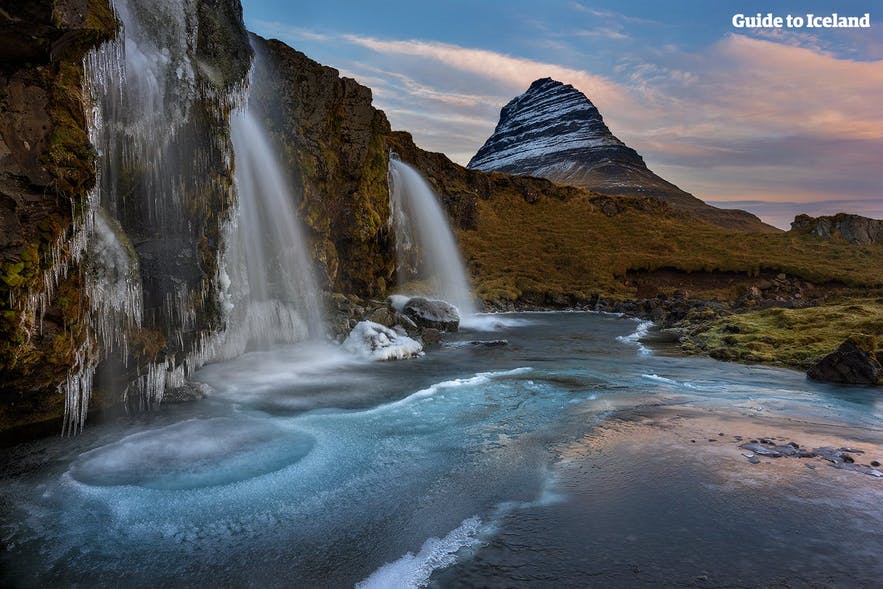
Kirkjufell mountain is no stranger to the camera, often celebrated (albeit with no evidence) as the most photographed mountain in Iceland. Its photogenic nature comes from its unique, pyramid-like shape, its isolation from the other mountains; its coastal location; and the fact it can be approached and shot from a wide variety of angles.
Kirkjufell is originally seen in visions by two characters; Bran Stark witnesses it as he learns about the creation of the White Walkers, and the Hound sees a vision of it in flames, allegedly sent to him by the Lord of Light. In Episode Seven of the seventh season, it is the destination of Jon Snow and his crew of adventurers as they seek to capture a Wight to bring to Queen Cersei.
In the show, it is simply referred to as 'The Mountain Shaped Like an Arrowhead.' No actor, however, shot a scene in front of the mountain; it was filmed in both summer and winter, then superimposed into the appropriate backdrops.
Almost all day tours to Snæfellsnes will include a stop at this famous attraction, and it is not a site to be missed should you be driving in the area.
Other Icelandic Features in Game of Thrones
Iceland has provided more to Game of Thrones than just its settings; characteristics of this nation and country can be seen in many elements of the series to those with a keen eye. From actors to animals, below are some Icelandic features to keep an eye out for when watching the show.
The Mountain That Rides
Otherwise known as 'The Mountain That Rides' or simply 'The Mountain,' the character is renowned for his incredible size and strength, appalling brutality, and loyalty to the Lannisters. When played by Björnsson, Clegane was enlisted by Cersei to battle for her in a trial by combat as she sought vengeance against her brother for the murder of her son.
Though seemingly defeated by the Red Viper, the Mountain manages to turn the melee around in a shock twist, in which he pins the fan-favorite character to the floor and crushes his skull with his bare hands.
Björnsson's did not achieve the muscularity of the Mountain for acting. In fact, he is a professional strongman, winning the title of the Strongest Man in the World in 2018. Icelanders have a long-running relationship with strongmen; he is not the first to win the title and will most likely not be the last.
The Icelandic Horse
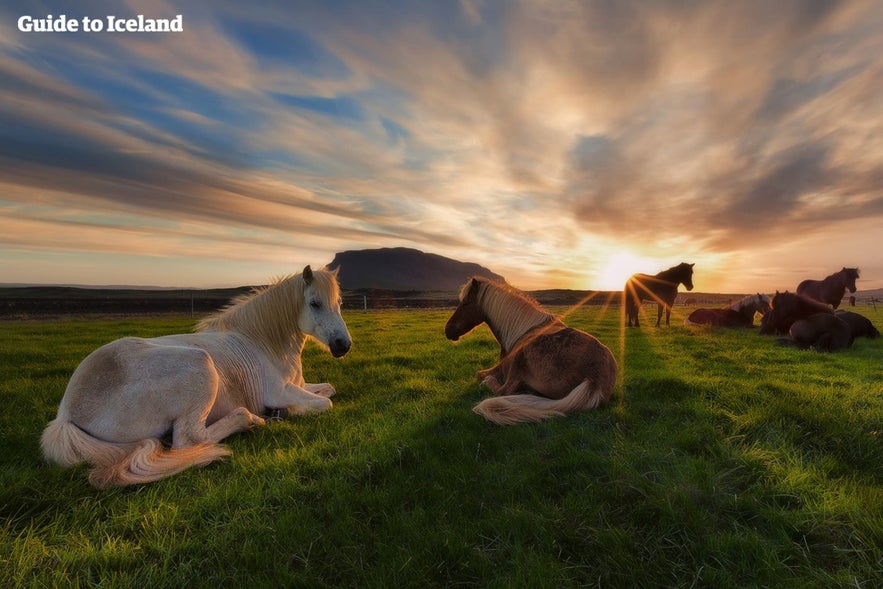
The Icelandic horse is a very special animal to the local people. Having been geographically isolated from all other breeds for more than a millennium, they are renowned for being notably cleverer, gentler, and more curious than their counterparts around the world.
Furthermore, they are very popular horses for dressage because they have an extra gait, the 'tölt,' which has long helped them traverse Iceland's snowy terrain.
With their thick, shaggy winter coats, Icelandic horses are instantly recognizable throughout the series, particularly in scenes North of the Wall under the Night's Watch ownership. Furthermore, Arya and the Hound can be seen riding them as they travel towards the Eyrie; Arya fits on hers quite comfortably, while the Icelandic horse's small stature makes the Hound look even more gigantic.
Icelandic horses are found in all regions of the country in all seasons because they have adapted to the winter and are little bothered by even the worst weather. As such, horse riding tours, which will let you feel like you are immersed in the world of Westeros, are available year-round.
Extras
Extras featured in all of the scenes mentioned are Icelandic, wildlings, and Westerosi alike. One thousand people applied to appear as extras in the second season of the show, but only fifty were selected, most of them exhibiting Viking heritage, with beards and long locks. Even as extras, these Icelanders had to spend hours in hair, makeup, and costumes to ensure they blended seamlessly with the incredible world of Westeros.
As more scenes were filmed in Iceland, more locals were a part of the show, in front of and behind the camera. Watching the series with an Icelander will likely involve them pointing to the back of someone's head and excitedly claiming it to be them or someone they know.
Similarities Between Game of Thrones and Icelandic Folklore
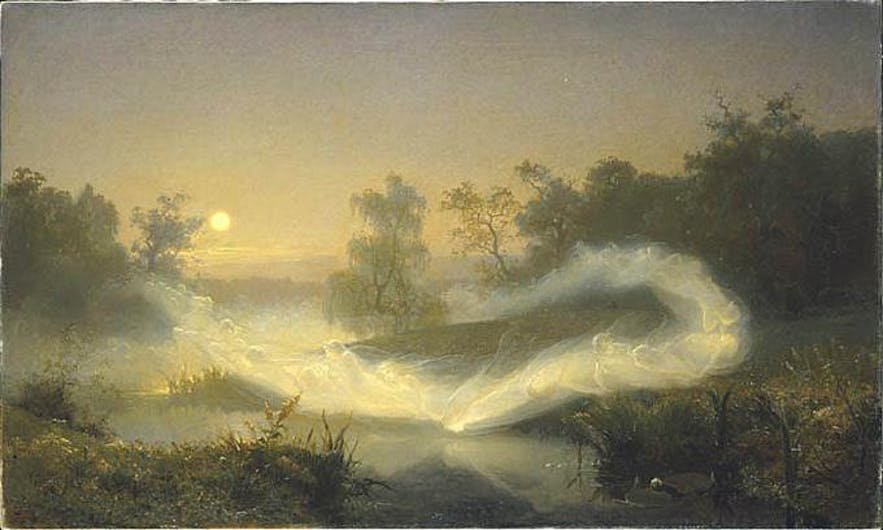 Photo from Wikimedia, Creative Commons, by August Malmström. No edits made.
Photo from Wikimedia, Creative Commons, by August Malmström. No edits made.
George R. R. Martin had a wide range of inspirations when creating A Song of Ice and Fire; his epic fantasy took concepts from many other novels across a spectrum of genres, geographical locations around the world, and historical events, most notably the War of the Roses.
Though he has not explicitly claimed Icelandic folklore has inspired his novels, it certainly has influenced many of his influencers, such as Tolkien. We cannot help but make some comparisons between his imagination and that of the early Icelanders.
Perhaps the most striking comparison to be made is between the Children of the Forest and the Hidden People, or huldufólk. In Game of Thrones, the Children are an ancient people who are intrinsically tied to nature, can utilize and hide in it in ways impossible to man. They had inhabited Westeros long before the First Men and the Andals, lived simplistically without modern technology, and were fiercely defensive over their territory.
- See also: Folklore in Iceland
They sporadically clashed with their invaders but were neither considered intrinsically good or evil; their relationships with people depended on the individuals on both sides and the circumstances of the interaction.
All of this is very similar to the way that Icelanders have long considered the hidden people. The main differences are that the hidden people are said to make their homes in rocks, not woodland; they follow Christianity, not the Old Gods; and that they resemble beautiful humans of all ages, not just youths.
Finally, the religion of the North, based on natural forces and the wilderness, is inspired heavily by paganism, which was followed by the vast majority of Icelanders until the country converted to Christianity in 1000 AD. Like the influence of the Seven in Game of Thrones, this conversion marked a change of attitude towards magic, the land, and the unknown and forever altered the relationship between humans and nature.
- See also: Vikings and Norse Gods in Iceland
Game of Thrones Tours in Iceland
At Guide to Iceland, we have even arranged self-drive tours and vacation packages designed for Game of Thrones superfans.
This private jeep excursion is an example of a day tour that will take you across a range of the sites mentioned above, allowing you to see Olly’s village, the countryside of Meereen, the Blood Gate, and more. If you’d like to have more time at each site to truly immerse yourself in the fantasy, this two-day tour, which also includes visits to the country’s hot springs, may have more appeal.
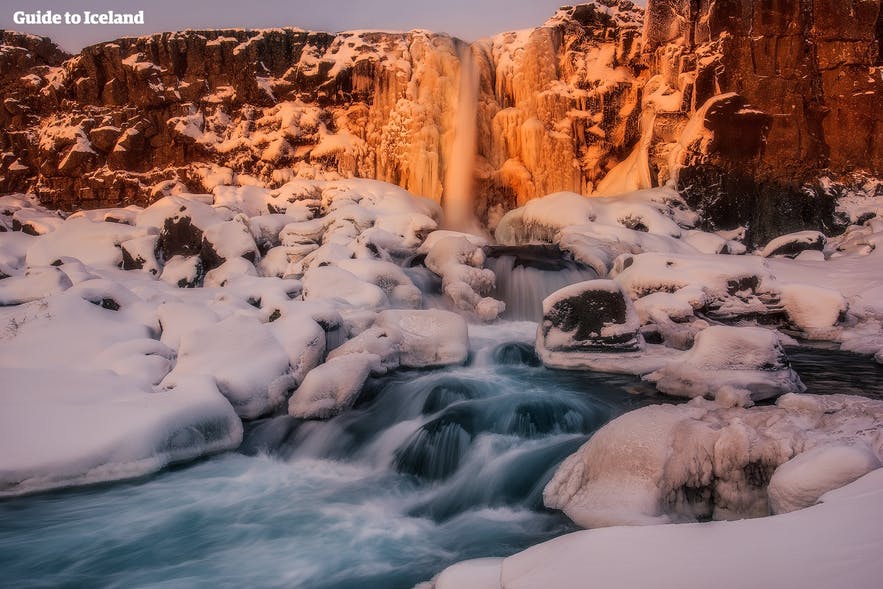
Bundle tours will allow you to spend several days on separate excursions, each exploring a different side of Westeros and Iceland. This three-in-one-bundle, for example, is conducted over four days and will reveal to you the shooting locations over the Golden Circle, South Coast, and Mývatn area; it also includes domestic flights between Reykjavík and Akureyri in the north.
Those seeking a Game of Thrones-based holiday who want the convenience of having all tours and accommodation booked for them, meanwhile, will enjoy a self-drive or vacation package. Those eager to drive themselves should check out this eight-day self-drive that will take you on a full circle around the country and allow you to visit the vast majority of sites listed above.
If you don’t want the stress of taking the wheel and would prefer to be driven to each site, check out this eight-day package instead.
To check out all the options available to fans of this incredible series, simply type Game of Thrones into the search bar above and browse to your heart’s content!
Would you visit Iceland to visit these Game of Thrones locations? Did you find this article useful? Make sure to leave your thoughts and queries in the Facebook comments box below.
Otros artículos interesantes
Localizaciones de películas en Islandia
¿Qué películas y series de televisión internacionales han sido filmadas en Islandia? ¿Por qué eligen los productores Islandia para rodar? Consulta esta lista de personajes famosos de Islandia A...Leer más
Yule Lads Islandeses y Gryla | Trolls de Navidad en Islandia
¿Quiénes son los Yule Lads islandeses? Si no es Papá Noel, ¿a quién entonces se celebra en Navidad? ¿Qué papel tiene la gigantesca Gryla en el folclore islandés en Navidad? ¿Y qué es el Gato de Navi...Leer másNochevieja en Islandia
¿Cómo es la Nochevieja en Islandia? ¿Cómo es la Nochevieja en Reikiavik? ¿Qué hace que la Nochevieja en Islandia sea tan especial? ¿Dónde están las mejores fiestas de Nochevieja en Reikiavik? Entérate...Leer más

Descarga la mayor plataforma de viajes a Islandia en tu móvil para gestionar tu viaje al completo desde un solo sitio
Escanea este código QR con la cámara de tu móvil y pulsa en el enlace que aparece para añadir la mayor plataforma de viajes a Islandia a tu bolsillo. Indica tu número de teléfono o dirección de correo electrónico para recibir un SMS o correo electrónico con el enlace de descarga.

